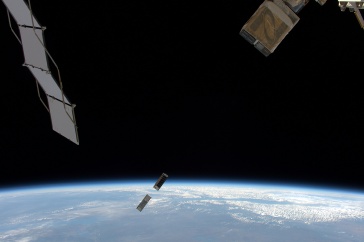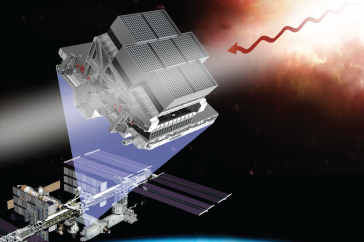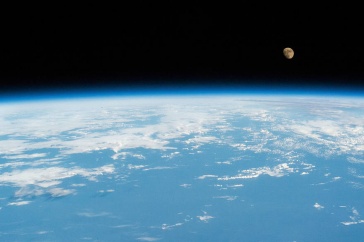
Image credit: NASA/SDO
UNH will receive $906,055 in funding to build on its existing strengths in space weather research and education.
The U.S. National Science Foundation recently announced it will award $12 million in funding for seven research projects as part of its Advancing National Space Weather Expertise and Research toward Societal resilience, or ANSWERS, solicitation. UNH space scientists are participating in two of the seven projects that are aimed at improving the understanding of the Sun-Earth system and the space weather that impacts our satellites, technologies and astronauts in space. The ANSWERS program specifically designates funding for principal investigators who are early-career researchers and people traditionally underrepresented in the STEM fields.
Jim Ryan, professor emeritus of physics, is the UNH lead for one of the funded projects, titled “Solar Energetic Particles, Solar Neutrons, and a New Space Weather Facility in Hawai’i.” The project, led by Veronica Bindi at the University of Hawai’i, will re-establish a neutron monitor on the summit of Haleakala on the island of Maui — the site of the National Solar Observatory and the Daniel K. Inouye Solar Telescope.
"Such centers are worthwhile because they combine data from local instruments with data from other ground-based stations and spacecraft to get a comprehensive picture of Earth's constantly changing radiation environment."
Neutron monitors observe the rate of change of cosmic rays that strike the Earth, providing precise measurements of the radiation that could endanger spacecraft, astronauts and high-flying aircraft. Many neutron monitoring stations have lost funding in recent decades, including the one on Haleakala, but this project hopes to breathe new life into the site by providing state-of-the-art electronic equipment that will measure the cosmic rays once again. This NSF funding will also allow the University of Hawai’i to build a center to train students and broadcast real time data from the neutron monitor. “Such centers are worthwhile because they combine data from local instruments with data from other ground-based stations and spacecraft to get a comprehensive picture of Earth's constantly changing radiation environment,” Ryan explains.
Ryan will work closely with UNH senior research scientist Jason Legere and a graduate student to deploy, operate and oversee the performance of the neutron monitor. Because the deployment will be at a remote site — on a 10,000-foot mountain in the middle of the Pacific Ocean — the team will have to prepare all the equipment on UNH’s Durham campus, which includes any fabrication, calibration and testing. For these efforts, UNH will receive $665,884 over the course of four years.
Kai Germaschewski, UNH associate professor of physics, is the UNH lead in another ANSWERS project titled, “Dynamics and Impacts of Electrons and Ions in the Earth’s Magnetosphere-Ionosphere System.” The project, led by Liang Wang at Princeton University, will advance the models for the integrated magnetosphere-ionosphere-thermosphere system to ultimately improve space weather predictions.
“Oxygen ions that well up from the Earth’s ionosphere into the magnetosphere play an important role in space weather effects,” Germaschewski explains. “In our project we will integrate a novel multi-fluid model and couple it to the ionosphere, which will enable us for the first time to track the flow of these heavy ions through the entire magnetosphere-ionosphere system and study the impact on the global space weather dynamics.”
The best way to making scientific progress is to combine modeling and observational data, he says. To that end, UNH space scientist Jing Liao, who is an expert in satellite measurements of heavy ion data, will be a crucial participant of the project by combining the data with the results of the model to focus on the role of oxygen ions on space storms.
This project also has an educational component: The researchers will help to train secondary educators and create engaging teaching materials that focus on space weather science, and the team will collaborate with the UNH-led Space Weather Underground Program, which teaches students about space weather by having them build and deploy magnetometers and then monitor the data they collect. UNH will receive $240,171 for its role in this project.
Ryan and Germaschewski hold joint appointments in the UNH College of Engineering and Physical Sciences and the UNH Space Science Center.
The UNH Institute for the Study of Earth, Oceans, and Space (EOS) is UNH's largest research enterprise, comprising six centers with a focus on interdisciplinary, high-impact research on Earth and climate systems, space science, the marine environment, seafloor mapping and environmental acoustics. With approximately 100 principal investigators managing more than 400 individual grant awards, and with annual expenditures exceeding $45 million, EOS fosters an intellectual and scientific environment that advances visionary scholarship and leadership in world-class and graduate education.
-
Written By:
Rebecca Irelan | Institute for the Study of Earth, Oceans, and Space | rebecca.irelan@unh.edu | 603-862-0990



















































